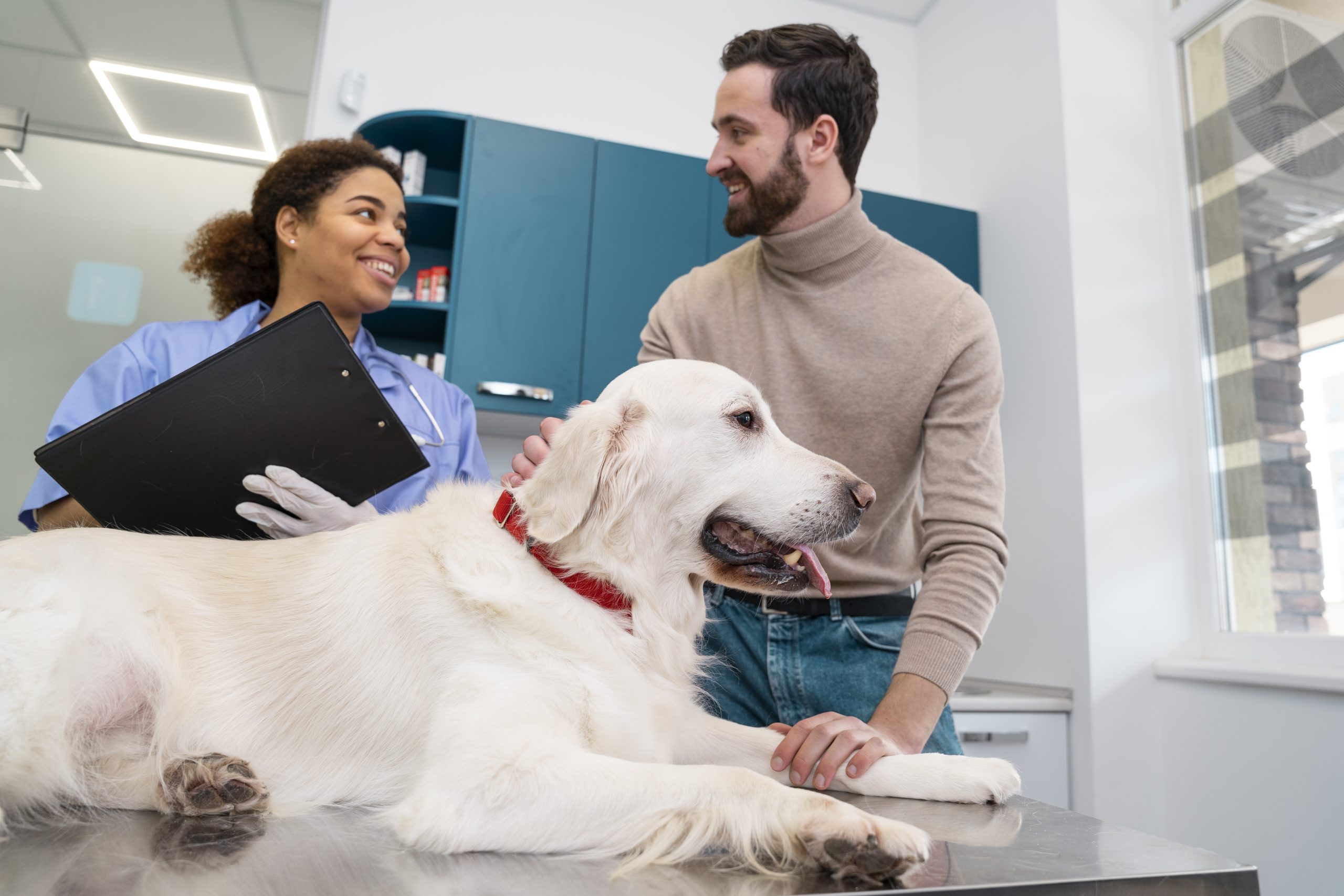
What behaviours can you teach your dog before a vet visit to help them stay calm and relaxed?
Here are some suggestions from our in-house reactive dog mum, Tracey, on things you can do to help your dog be calm at the vet’s. Please note that exposing your reactive dog to any new thing should be done in a controlled environment and always start small. Reward your pet with treats and praise whenever they interact positively with new people, animals or experiences. This will help them associate new experiences with positive feelings.
- Teach your dog to be comfortable with being touched and handled. This should include getting them used to having their paws touched, ears checked, and mouth examined. You can ease them into this by gently touching your dog’s body parts and rewarding them with treats or praise.
- Train your dog to feel comfortable in a crate so that they can be safely transported to the vet. Again, start gradually by leaving the crate open and placing treats or toys inside, and gradually encourage your dog to spend more time inside.
- Practice walking often on a leash with your dog to ensure they are comfortable and calm when walking into the vet’s office. Leash training your dogs from a young age will also help you get their daily exercise done safely.
- Gradually expose your dog to sounds they may come across at the vet’s, such as clippers or other medical equipment. Playing these sounds at a low volume while giving your dog treats helps to create positive associations.
- Begin by introducing your dog to new people, such as friends or family members, to help them become more comfortable around strangers. This can make it easier for them to be handled by the vet.
- Ensure your pet is comfortable with and at least used to other dogs and pets as early as possible. This will help ensure that they do not get upset if they see other dogs or pets at the vet’s.
- Desensitisation training involves gradually exposing your pet to their triggers in a controlled environment. This can help them become more comfortable with things that used to bother them. Identifying the triggers can play a major role in modifying their behaviour.
Consider working with a professional trainer who has experience working with pets if you are struggling with training your dog. They will help you develop a plan to socialise your pet and provide guidance and support along the way.
Always remember that training a dog takes time and patience. Don’t give up if you don’t see results immediately. Consistency and positive reinforcement are key. Your dog can learn to be more social and confident in new situations with the right approach and patience backed by plenty of positive reinforcement.
By teaching these behaviours through positive associations, you can help your dog feel more comfortable and relaxed during vet visits, making it an enriching experience for both of you.
Disclaimer: We are not vets or trainers, just passionate people that own reactive or anxious pups. The above are accounts of what we do and how they go for our canines. We hope some of them are helpful for you.



 Blog
Blog

